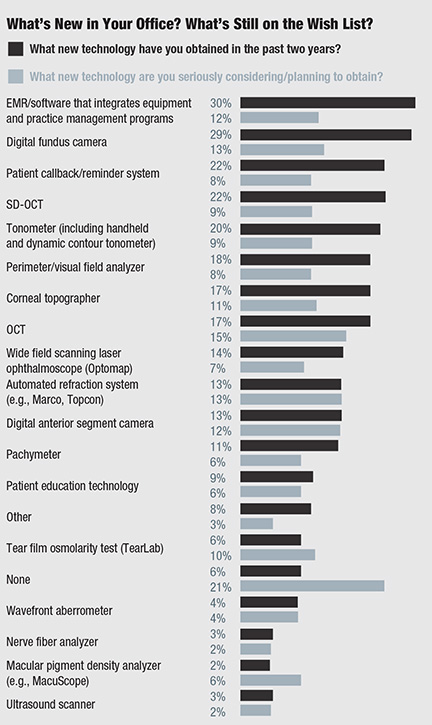 |
Despite the recent explosion of technological advances in the optometric world, optometrists’ must-haves haven’t changed much. Digital fundus cameras and EHR software topped the list of recent purchases for the past five years, according to Review of Optometry’s annual diagnostic technology survey. Take a look at what more than 300 of your colleagues spent their money on last year—and how the new tools are impacting their practices.
Top Purchases
EHRs squeaked ahead of digital fundus cameras by just 1% with 30% of respondents upgrading to a new one this year (see, “What’s New in Your Office? What’s Still on the Wish List?”). That comes as no surprise, of course, given the impending regulations regarding Meaningful Use and ICD-10 just around the corner. And considering 70% of this year’s respondents perform a dilated fundus exam at least once a year for patients with eye diseases such as glaucoma or diabetes, a digital fundus camera is a safe bet too. In fact, the top 10 recently purchased items are the same from last year, if a little shuffled. Last year, the top 10 purchases were:
1 and 2. Digital fundus camera, EHR (both 30% of respondents)
3. SD-OCT (24%)
4 and 5. Corneal topographer, patient callback/reminder system (both 21%)
6 and 7. Automated refraction system, Tonometer (both 20%)
8 and 9. Perimeter/visual field analyzer, OCT (both 19%)
10. Widefield scanning laser ophthalmoscope (Optomap) (18%)
But technology trends have morphed some over the years. Even though patient callback/reminder systems have been in the top 10 in recent years, they weren’t even an option five years ago. This year, they rank number three in recently purchased.
“Our new patient communication tool has helped make contacting patients more efficient,” says Rosa Suarez-Reyna, OD, of San Antonio, Texas. “It’s a lot less work for staff now.”
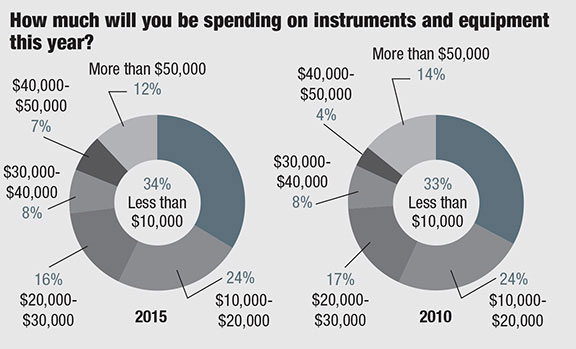 |
OD Wish List
The wish list, however, is another story, and responses were all over the board this year. While nearly half (47%) of the survey takers were hankering for a new digital fundus camera in 2010, the most desired piece of equipment this year is an OCT (15%)—and that’s the largest percentage of respondents. Other technologies that have doctors excited include automated refraction systems (13%), digital anterior segment cameras (12%) and, of course, digital fundus cameras (13%) and EHR systems (12%). Surprisingly, 21% don’t have anything on their technology wish lists. Of course, nearly three-quarters of respondents who don’t have plans for upcoming purchases had recently invested in more than one new instrument for their office—only one respondent has neither purchased nor plans to purchase new technology in the next few years.
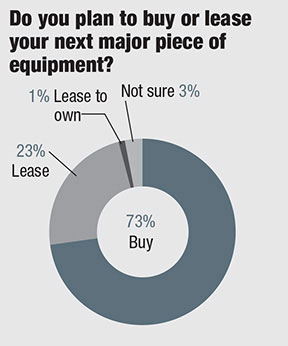 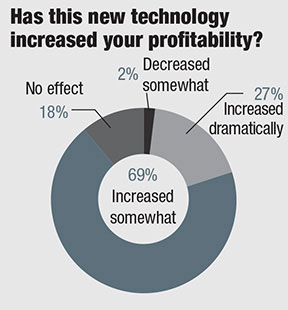 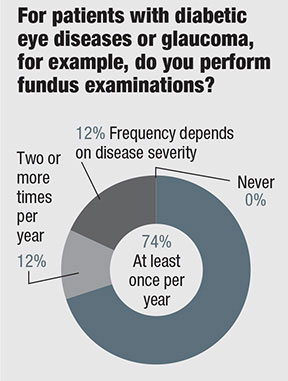 |
Why Buy
The desire to boost patient care came in as the number one reason optometrists are upgrading their technology. Respondents seem thrilled with the outcomes too. Nearly 90% of survey takers said the new technology improved patient care, and more than half said it was a dramatic improvement to patient care. Many doctors purchased a digital fundus camera to help with patient education—with impressive results. Mariem Rodriguez Añasco, an OD in Puerto Rico, recently invested in a digital fundus camera, and offers an example of its impact: “The resolution and the photos are so sharp, and the patient loved it because she could see her retina. I was able explain everything about what’s going on, and the patient said ‘Oh my, I have never seen my retina before!’ In that moment, I felt so proud!”
New OCTs are drastically improving patient care as well. “I was constantly having to refer patients to an ophthalmology practice for OCT,” says Jennifer Keady, OD, of Burns, Ore., who recently purchased an OCT of her own. “It has made a huge difference keeping patients in office—financially and in patient satisfaction.”
Tina Jang, OD, who practices in Ontario, Canada, recently took a financial hit to purchase several new tools—including a perimeter/visual field analyzer, tonometer, wide field scanning laser ophthalmoscope and an SD-OCT—and says she couldn’t be happier with the decision. “Investment at the time was a bit overwhelming,” she says. “However, the patient sees the difference of our exams, and [we have] improved our patients’ care dramatically, which has led to patient referrals. Patients have complete confidence in our office to do a thorough eye exam when they come to see us.”
Money Matters
Although patient care is priority number one, it’s certainly a plus to have a boost in revenue, too. Only 8% of survey takers sought an increase in revenue as their main goal when purchasing new tools, yet 80% of those who invested in new technology saw an increase in revenue anyway. In fact, a whopping 78% of respondents who purchased something in the last year had an increase in revenue and patient care.
It’s lucky so many investments pay off with more money coming in. Budgets for new equipment haven’t changed a bit over the years. Most practitioners (68%) have $20,000 or less to spend on new technology this year, compared with 67% in 2010. While 73% of survey takers say they will buy their next piece of equipment, 24% are avoiding some of the financial strain by leasing. For some, it’s a fantastic opportunity to get the technology you need without the worry.
“Leasing the Optomap [retinal imaging device] was one of the best investments we have made,” one survey respondent says. “It has increased patient care, as we are able to see and document more in less time, which is good for our patients’ ongoing health care. We find it so valuable [that] we have included it in all exams and raised our exam fee. Patients are impressed with our technology and comment all the time.”Rave Reviews
Here are other technology purchases optometrists are thrilled they made:
- Automated Refraction System. “I didn’t think I needed a digital refracting system until I got one,” says Leslie Falcon, OD, of Chandler, Ariz. “I love the efficiency and the wow factor. Patients have told their friends about it. Kids think they look like Wall-E. The only problem is now I want one for my other exam lane.”
- Electrodiagnostic System (i.e., VEP, pERG). “It has given us an objective measure of the nerve functioning of various areas of the optic nerve, unlike visual fields, which are subjective,” says Rodney Fong, OD, who practices in Honolulu. “Patients love the high-tech aspect, and the procedure reimburses well through third party insurance.”
- OCT. “I purchased OCT to help with glaucoma and retinal disease,” says Richard Stegen, OD, of West Lebanon, NH. “It has impacted our patients and bottom line tremendously. This was by far the best tech purchase I have made to this point.”
- Slit Lamp. “We purchased a smartphone slit lamp adapter for anterior segment photos,” says Thad Wells, OD, of Russellville, Ky. “It’s great for patient education and monitoring disease processes, in addition to modest profitability.”
- Tonometer. “Patients hate the ‘puff’ and refer people here who have anxiety over that one simple test,” says Kristin O’Brien, OD, of Denver, Colo., who purchased a new tonometer last year. “It has increased our patient’s perception of us being a progressive office that does things better and differently.”
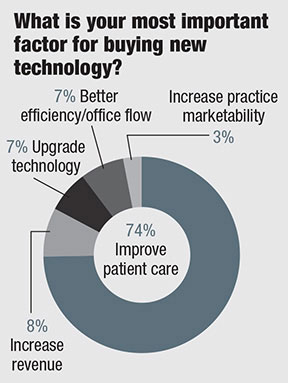 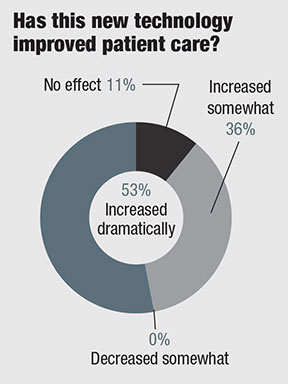 |

